Disclosure: This article contains affiliate links. We may earn a commission from purchases at no extra cost to you, which helps our travel content.
Standing at the base of Franz Josef Glacier, my heart raced with a mixture of awe and anticipation. The ancient ice formation towered above me—a magnificent frozen river cascading down from the Southern Alps, its surface a mesmerizing labyrinth of blue-tinged crevasses and crystalline formations. This wasn't my first adventure in New Zealand, but it would certainly be my most vertical one. As someone who's explored educational travel opportunities across continents, I can confidently say that ice climbing the Franz Josef offers something truly extraordinary: a perfect marriage of adrenaline-pumping activity and profound natural education. Whether you're celebrating an anniversary or simply seeking to forge unforgettable memories with your partner, this glacier experience transcends typical adventure travel. It's where luxury meets raw natural power, where physical challenge meets intellectual fascination—and where, I discovered, couples find a unique opportunity to strengthen their bond while conquering ancient ice together.
Preparing for Your Glacial Ascent
Let me be transparent: ice climbing is not for the faint of heart. It requires physical stamina, mental fortitude, and proper preparation. But that's precisely what makes it such a transformative experience for couples—sharing in both the challenge and the triumph creates memories that last far longer than standard vacation photos.
Before booking your expedition, I recommend at least 4-6 weeks of targeted physical conditioning. Focus on building upper body and core strength, as you'll be using ice axes to pull yourself up vertical ice faces. My partner and I committed to thrice-weekly strength training sessions, supplemented with cardio to improve our endurance.
While the premier guiding companies provide technical equipment, investing in quality base layers is essential. After extensive testing in various extreme environments, I've found that merino wool thermals offer unparalleled temperature regulation and moisture-wicking properties—crucial when you're alternating between intense exertion and static positions on the ice.
Mental preparation is equally important. Research the glaciology of Franz Josef to appreciate what you're climbing—this isn't just an adventure sport but an intimate encounter with a dynamic natural monument that's been shaped over millennia. Understanding the science behind the glacier's formation enhanced my appreciation tenfold as I scaled its cerulean walls.

💡 Pro Tips
- Book your climb at least 3 months in advance, especially during peak winter season (June-August)
- Train specifically for forearm endurance—try hanging from a pull-up bar for increasing intervals
- Practice meditation or breathing techniques to manage the inevitable moments of intensity during your climb
Luxury Accommodations: Where to Rest Before the Climb
After researching numerous options in Franz Josef village, I settled on Te Waonui Forest Retreat—an eco-conscious luxury lodge nestled among native rainforest. The juxtaposition of primeval forest against the backdrop of glacial ice creates a sensory experience that's uniquely New Zealand.
What distinguishes Te Waonui is their understanding of adventure travelers' needs. Their 'Climber's Recovery' package includes pre-climb muscle preparation massages and post-climb therapeutic treatments that saved my shoulders after a full day wielding ice axes. The five-course degustation dinner featuring local West Coast delicacies provided perfect fuel for our adventure.
For those seeking more intimate accommodations, Glacier Country Retreat offers private chalets with floor-to-ceiling windows framing spectacular glacier views. Waking up to the first light illuminating the ice while soaking in your private cedar hot tub is an experience that elevates this adventure beyond mere sport.
Whichever accommodation you choose, I strongly recommend booking a room with a glacier view—there's something profoundly moving about watching the evening light play across the ice formation you'll soon be scaling. And don't forget to request a packed gourmet lunch for your climbing day; proper nutrition at altitude makes a significant difference in your energy levels and enjoyment.
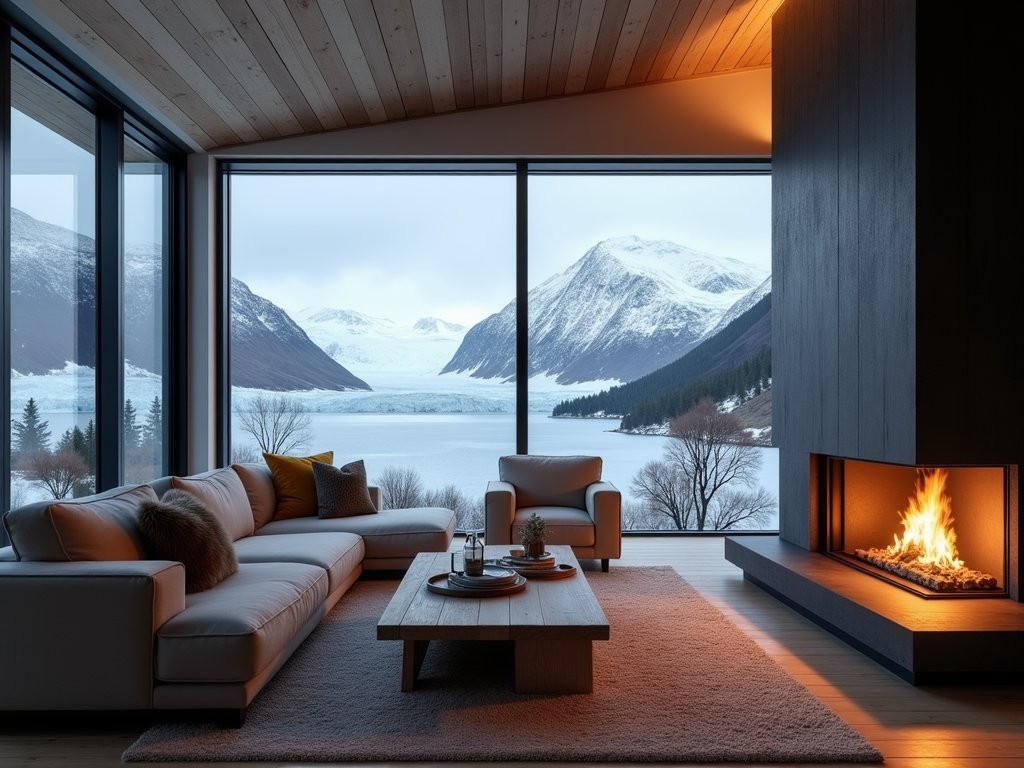
💡 Pro Tips
- Request rooms on the upper floors at Te Waonui for unobstructed glacier views
- Book the 'Climber's Recovery' massage package at least 24 hours before your climb
- Ask your accommodation to prepare a thermos of hot chocolate or coffee for your glacier expedition—sipping something warm while surrounded by ice is magical
The Climb: Techniques and Experiences
Our expedition began at dawn with a helicopter transfer to the glacier—a thrilling experience in itself as we soared over the crevasse-riddled landscape. While helicopter access adds to the cost, it's absolutely worth the investment, saving hours of arduous hiking and preserving your energy for the vertical challenges ahead.
After landing on the ice, our guide Mateo—a veteran climber with 15 years of glacial experience—conducted a thorough safety briefing and technical training session. The first hour was dedicated to mastering fundamental techniques: how to properly kick steps with crampons, efficiently swing ice axes, and establish secure anchors. Mateo's patient instruction built our confidence incrementally before we approached our first vertical wall.
The sensation of ascending a translucent blue ice face defies adequate description. Your world narrows to the points of contact—the precise placement of axe and crampon—while simultaneously expanding as you gain elevation and perspective. The physical challenge is matched by visual rewards: climbing through ice caves with light filtering through cerulean walls, discovering hidden moulins (vertical shafts formed by melting water), and witnessing the glacier's subtle movements.
For photography enthusiasts like myself, I recommend the waterproof camera case that allowed me to capture stunning POV footage while keeping my hands free for climbing. The vibrant blue ice formations photograph beautifully, but remember that no image fully captures the dimensional brilliance of glacial ice—this is truly an experience that must be lived firsthand.
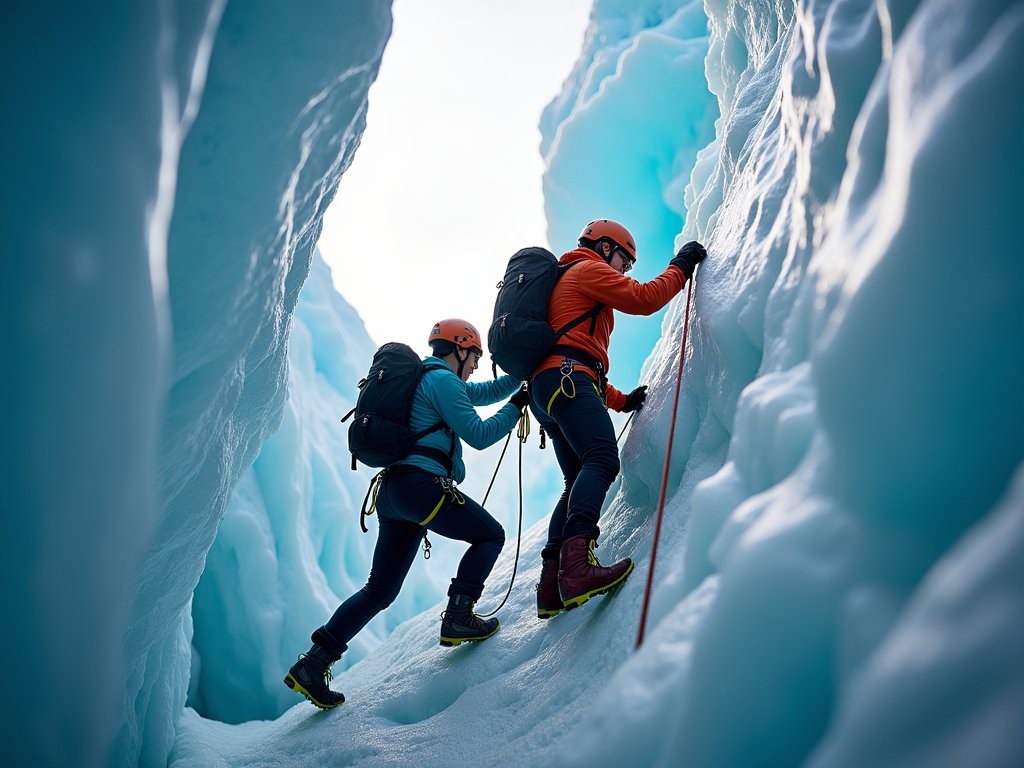
💡 Pro Tips
- Focus on your leg strength rather than arms—proper footwork with crampons saves enormous energy
- Communicate constantly with your partner during the climb—this builds trust and enhances safety
- Request to explore an ice cave if conditions permit—these ephemeral formations offer the most otherworldly photo opportunities
The Educational Element: Glaciology in Action
What elevates the Franz Josef experience beyond pure adrenaline is its educational component. You're not just climbing frozen water—you're scaling a dynamic natural phenomenon that tells the Earth's climate story across millennia.
Our guide Mateo wasn't just a climbing instructor but a passionate glaciologist who transformed our rest breaks into fascinating mini-lectures. He pointed out features I would have otherwise missed: the stratified layers revealing annual snowfall patterns, the embedded rock debris telling tales of mountainside erosion, and the subtle but constant movement of the glacier itself—flowing downhill at rates up to 50cm per day.
The most profound moment came when Mateo had us place our ears directly against the ice during a quiet moment. The glacier speaks—a symphony of creaks, groans, and occasional thunderous cracks as internal pressures shift and release. This is not static ice but a living entity responding to gravity, temperature, and pressure.
For couples seeking deeper understanding, I highly recommend the glacier field guide to read before your expedition. Having this knowledge transformed our experience from a purely physical challenge into an intellectual exploration as well.
During our climb, we witnessed firsthand the effects of climate change—our guide pointed out markers showing where the glacier terminus had been just decades ago, now hundreds of meters higher up the valley. This sobering reality check created meaningful conversations between my partner and me about environmental responsibility that continued long after we left New Zealand.

💡 Pro Tips
- Ask your guide specifically about glacial features—most are passionate educators eager to share their knowledge
- Bring a small notebook in a waterproof case to record interesting facts and observations during breaks
- Request to see a comparison of historical glacier photographs with current positions—the visual evidence of glacial retreat is striking
Après-Climb: Luxury Recovery Experiences
After conquering vertical ice walls and pushing your physical limits, proper recovery becomes an essential component of the experience. Franz Josef village has developed a sophisticated wellness infrastructure catering specifically to adventure travelers.
The Glacier Hot Pools, nestled in lush rainforest, offer private thermal pools fed by glacier-filtered water. We reserved the 'Forest Suite'—a secluded pool surrounded by native ferns where we could soak our tired muscles while processing the day's achievements. The contrast between the morning's icy ascent and evening's warm immersion creates a sensory experience that feels deeply restorative.
For those seeking more comprehensive recovery, the Amaia Luxury Spa offers a 'Glacial Recovery' treatment combining hot stone therapy with specialized massage techniques targeting climber-specific muscle groups. Their signature treatment incorporates manuka honey and glacier silt—connecting your wellness experience to the very landscape you explored.
Dining after such an intense physical experience deserves equal attention. The King Tiger Restaurant surprised us with sophisticated Northern Thai cuisine—seemingly incongruous in a small New Zealand town but executed with remarkable authenticity. Their Tom Kha Gai soup, rich with coconut milk and galangal, was exactly what my body craved after a day on the ice.
I particularly recommend investing in compression socks to wear during your recovery evening. The targeted pressure significantly reduced muscle soreness in my calves and improved my recovery time, ensuring we were ready for another adventure the following day rather than nursing aching legs.
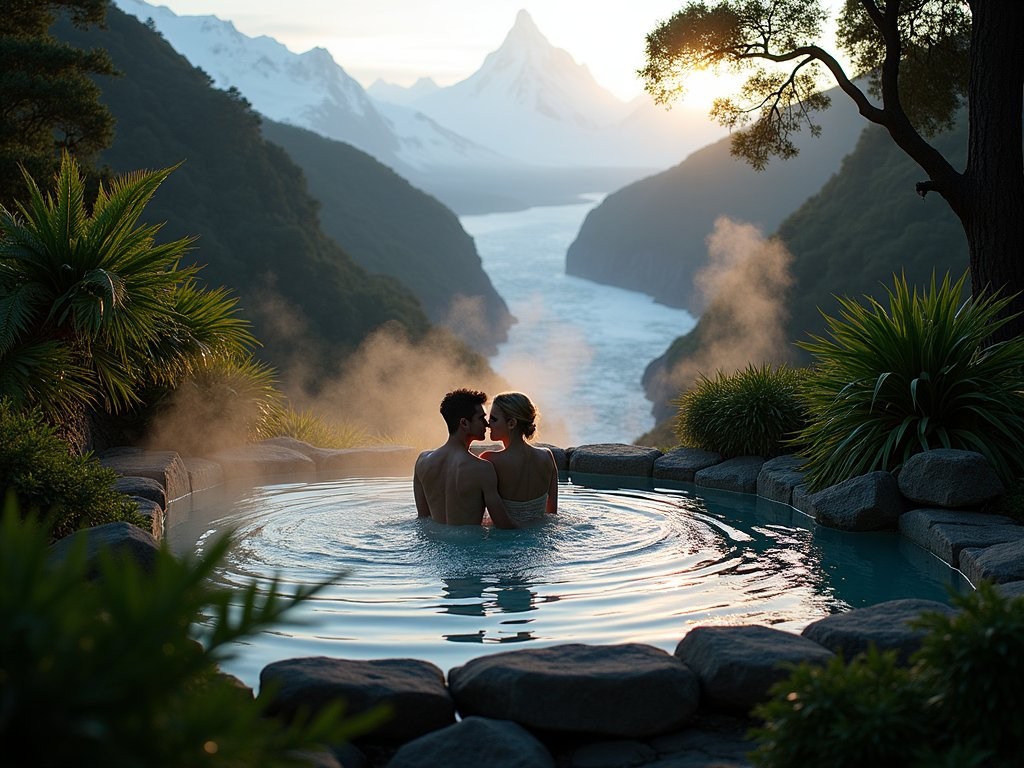
💡 Pro Tips
- Book your hot pool session in advance—the private pools often sell out, especially during high season
- Schedule your massage for 2-3 hours after climbing to allow your body to begin its natural recovery process first
- Stay hydrated with electrolyte-enriched beverages after your climb—the physical exertion combined with excitement often leads to dehydration
Final Thoughts
Ice climbing Franz Josef Glacier transcends the typical adventure experience—it's a multidimensional journey that engages body, mind, and spirit while creating an unbreakable bond between partners. The physical triumph of scaling vertical ice walls, the intellectual stimulation of understanding glacial processes, and the sensory pleasure of luxury recovery create a perfectly balanced experience that epitomizes what I seek in educational travel. As climate change accelerates glacial retreat worldwide, these opportunities become increasingly precious—a sobering reminder that some of Earth's most magnificent formations may look dramatically different for future generations. If you and your partner seek an adventure that combines luxury with learning, physical challenge with profound natural connection, make Franz Josef a priority. The blue ice calls—and answering that call together might just be the most exhilarating education you'll ever receive.
✨ Key Takeaways
- Proper physical preparation transforms ice climbing from merely challenging to genuinely enjoyable
- The educational component of understanding glaciology adds profound depth to the adventure experience
- Luxury recovery options in Franz Josef village are specifically designed for post-climb rejuvenation
- Climate change is visibly affecting Franz Josef Glacier—making this adventure increasingly precious
- The shared challenge creates a unique bonding experience for couples that extends beyond the climb itself
📋 Practical Information
Best Time to Visit
June through August (New Zealand winter) for optimal ice conditions
Budget Estimate
$2,500-3,500 per couple for a 3-day experience including luxury accommodation, guided climb with helicopter access, and recovery treatments
Recommended Duration
3-4 days (1 day preparation/training, 1 full climbing day, 1-2 days for recovery and exploring the region)
Difficulty Level
Challenging

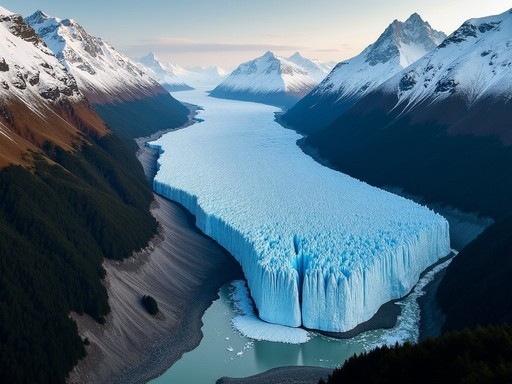
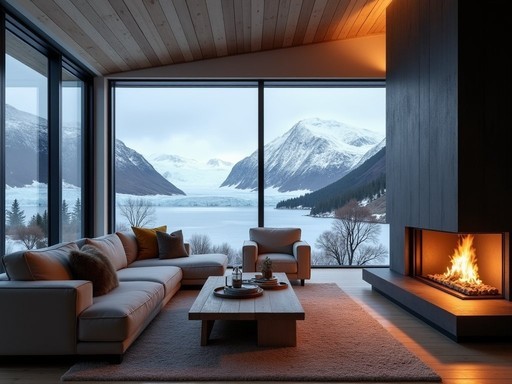
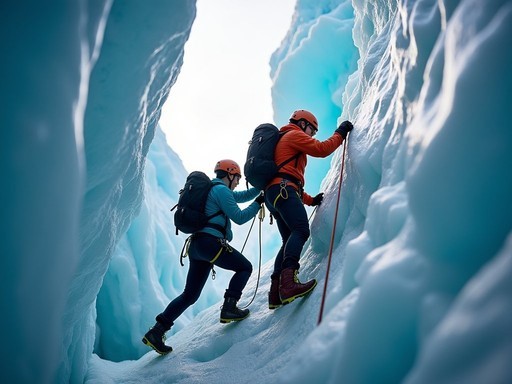

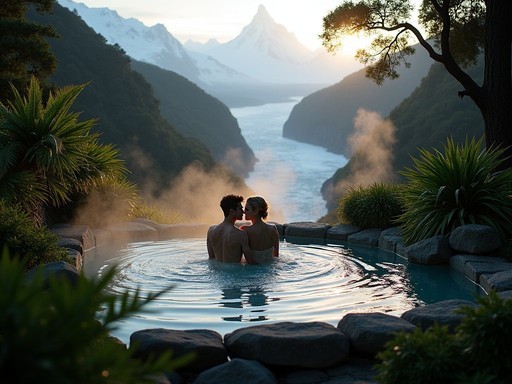










Comments
travelgal
Which accommodation did you end up staying at? The luxury options you mentioned sound amazing but wondering if there are more budget-friendly places that are still nice?
Nova Rice
Hi travelgal! While I stayed at Rainforest Retreat for the article, there are definitely more budget-friendly options in Franz Josef village. The YHA hostel there is actually really nice and clean with some private room options too. Great social atmosphere to meet other climbers!
travelgal
Perfect, thanks! Will check out the YHA!
cityadventurer
This looks incredible but I'm a complete beginner. How difficult is it really? Do you need to be super fit? Planning a NZ trip for January and wondering if I should add this to my itinerary or if it's too advanced for someone with zero climbing experience.
wildninja
I was a total beginner too! They have different tour options - I did the half-day one and it was challenging but doable. Just make sure you have decent fitness for hiking. The guides teach you everything you need to know!
Douglas Bradley
I'd add that proper preparation makes all the difference. Reasonable fitness is sufficient, but do invest in good thermal layers. My base layer was essential - the glacier can be surprisingly cold even in summer months.
cityadventurer
Thanks both! This is super helpful. I'm going to book it!
Douglas Bradley
Nova, excellent analysis of the educational aspects of glacier climbing. I've climbed several glaciers across North America, but Franz Josef offers something uniquely accessible yet challenging. The rapid rate of glacial retreat here makes this experience particularly poignant - we're witnessing climate change in real-time. I appreciated your section on glaciology; too many adventure blogs focus solely on the adrenaline without acknowledging the science and environmental context. One suggestion for readers: consider spending an extra day in the area to fully appreciate the glacier from different perspectives. The valley walk provides crucial context for understanding what you're climbing.
wildninja
Just did this last week and WOW what an experience! The guides were super professional and made me feel safe even though I was terrified at first. That moment when you're hanging off the ice with just your crampons and ice axe... nothing like it! The views from up there are absolutely worth the effort. Nova, your description of that 'mixture of awe and anticipation' is spot on - my heart was POUNDING the whole time!
Nova Rice
So glad you had an amazing experience, wildninja! That feeling of accomplishment when you're on the ice wall is pretty unforgettable, right?
wildninja
Absolutely unforgettable! Still can't believe I actually did it!
Raymond Hassan
Having climbed several glaciers across the world, I found Franz Josef particularly interesting for its rapid movement and unique features. One practical tip I'd add: invest in quality gloves with proper grip. My climbing gloves were essential - standard winter gloves simply don't provide the dexterity needed for ice tools while keeping hands warm. Also worth noting that the helicopter ride option, while pricey, gives you access to parts of the glacier impossible to reach on foot now due to terminal face retreat. The perspective from above also helps you understand the glacier's movement patterns before you climb. Nova, did you notice the significant retreat compared to historical markers?
Nova Rice
Absolutely, Raymond. The guides pointed out where the glacier reached just 10 years ago - it's shocking to see how much it's receded. Makes the experience even more precious knowing these formations are changing so rapidly.
wildbuddy
What about safety? I've heard the glacier is constantly moving. How do the guides manage the risks?
sunnypro
When I went, the guides checked conditions every morning and adjusted routes accordingly. They're super serious about safety - we had comprehensive training and top-notch gear. They won't go if conditions aren't right.
Taylor Moreau
Excellent write-up, Nova. I visited Franz Josef last year during a business trip extension and can confirm the accommodation recommendations are spot on. The Rainforest Retreat offers exceptional value with their deluxe units. For those planning this adventure, I'd recommend spending at least 3 days in the area - one for preparation and acclimatization, one for the climb, and one for recovery and exploring the surrounding rainforest. The contrast between glacial ice and lush rainforest within such proximity is truly remarkable and unique to this region.
sunnypro
I did this climb last winter and it was life-changing! One tip I'd add - layers are absolutely crucial. The weather changed three times during our climb. Also, the guides were super knowledgeable about the glacier movement and climate impact. Made me appreciate how fast these glaciers are retreating. Definitely worth the splurge for the full-day experience rather than the half-day option.
skybuddy
How physically demanding was this? I'm reasonably fit but not a climber. Would I need special training before attempting this?
Nova Rice
Hey skybuddy! You don't need to be an expert climber, but decent fitness helps. The guides provide training on the day and adapt the route to your ability. I'd recommend some basic cardio prep though!
photoguy
Those glacier blue colors in your photos are stunning! What camera setup did you use?
Nova Rice
Thanks photoguy! I used my Sony A7III with a weather-sealed lens. The glacier blue really pops without much editing!
photoguy
Thanks for sharing! I need to upgrade my gear before my NZ trip next year.
Venture X
Premium card with 2X miles, $300 travel credit, Priority Pass